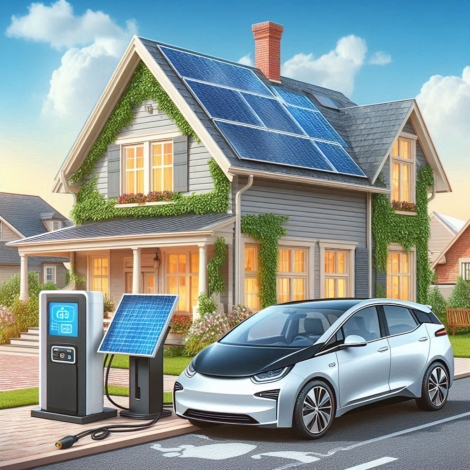Solar panels on roofs, electric vehicles in garages and smart appliances and thermostats in homes are transforming the ways households use energy, and the trends offer utilities two powerful opportunities. Utilities can lower costs and decarbonize energy production, but only if they can engage households and manage the changing technologies well, according to a new analysis by Deloitte Research Center for Energy & Industrials. If the deployment of these ‘distributed energy resources,’ as the technologies are called, is governed by sound policy, low- to moderate-income households may benefit most.
“The energy efficiency retrofits needed to achieve a zero-carbon-aligned building sector by 2050 could yield utility savings ranging from US $181 to US$1,539 per dwelling per year across [US] states. Our analysis found that if this target was achieved by focusing on LMI (Low-to-Moderate Income) customers first, all energy-insecure households in every state would be energy-efficient by 2035,” Craig Rizzo, Managing Director of Deloitte Consulting told E4C by email.
The reduction in costs is meaningful in its context. Housing and transportation are the first and second highest expenses for US households at 33.3 percent and 16.8 percent of expenditures. And large numbers of Americans struggle to pay those bills. One-third of US households are housing-cost-burdened, and more than a quarter are energy insecure, meaning they have difficulty paying energy bills or they keep their home at unsafe temperatures to save money. Transportation tells the same story. Census data suggests that nearly half of Americans live in areas where the average household is transportation-cost-burdened, meaning they pay more than 15 percent of their income on transportation.
Households are driving the change
Through solar panels and other distributed energy resources, households are generating energy, storing it and drawing it from the grid more efficiently. The result is a decentralization of energy production and storage that is shifting away from traditional utility-supplied energy. While commercial consumers are a part of the trend, households represent the greatest capacity and potential for equity, the Deloitte report says. Utilities could manage the transformation poorly and struggle to keep costs low and meet goals to decarbonize. Or they could engage customers and leverage distributed energy resources for greater equity. The result may depend on wise policy and how well the utilities make their case to regulators, the Deloitte report says.
These technologies are already deployed unevenly, suggesting a greater need for policies that include equity goals.
“Market-driven adoption has resulted in a concentration of DER in higher-income households, except for heat pumps. And expensive utility programs benefiting these households, namely net metering, undermined the equity argument for DER,” Mr. Rizzo says. More than half of distribution plans now have equity goals, however, Mr. Rizzo says.
Utility Participation Is Key
Plans to deploy these technologies must include the utilities, for three reasons Mr. Rizzo says. First, utilities can directly deploy the technologies. In jurisdictions that bar that kind of investment by utilities, those regulations must be waived for projects the benefit underserved households. Second, utilities can provide financing for energy-efficiency projects, and customers could see savings greater than the expense of adding new energy-efficient technologies. Third, programs to engage people in underserved communities could build an understanding of the ways that energy production affects people daily. One fundamental way, for example, is air quality.
The Engineers’ Role in Distributed Energy
Engineers will play a major role, with increasing demand for digital skills, Mr. Rizzo says. Data science has been in high demand as digital skills have risen to prominence in the energy sector. Generative AI in particular is reshaping the workforce and the skills needed to work in energy.
“The solar power generation industry includes five of the top 10 most AI-intensive occupations—that is, occupations with the largest share of job postings demanding AI skills,” Mr. Rizzo says. “The most significant of these occupations in the industry are engineering professionals.”
For more, please see the report:
Households transforming the grid: Distributed energy resources are key to affordable clean power

